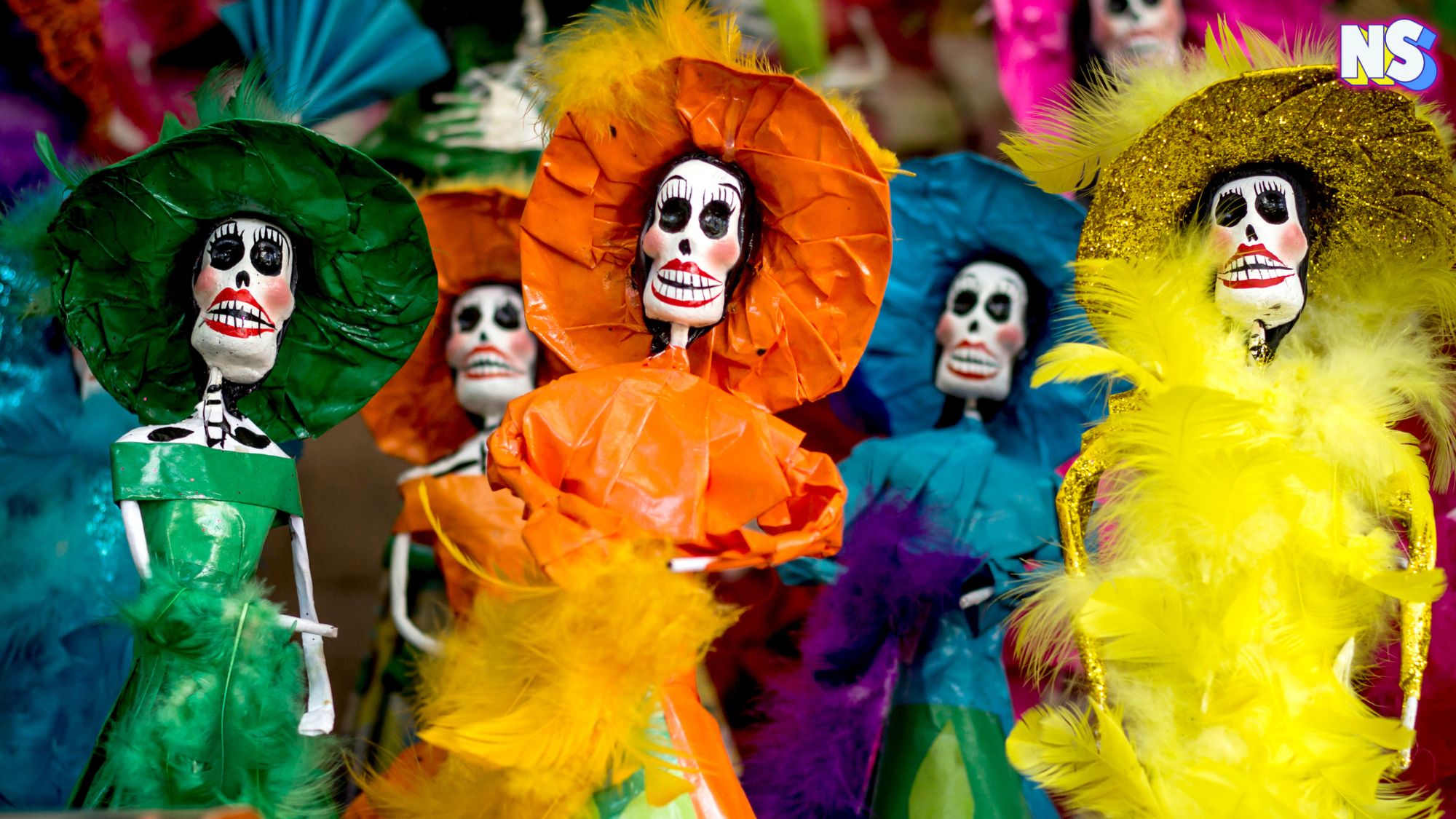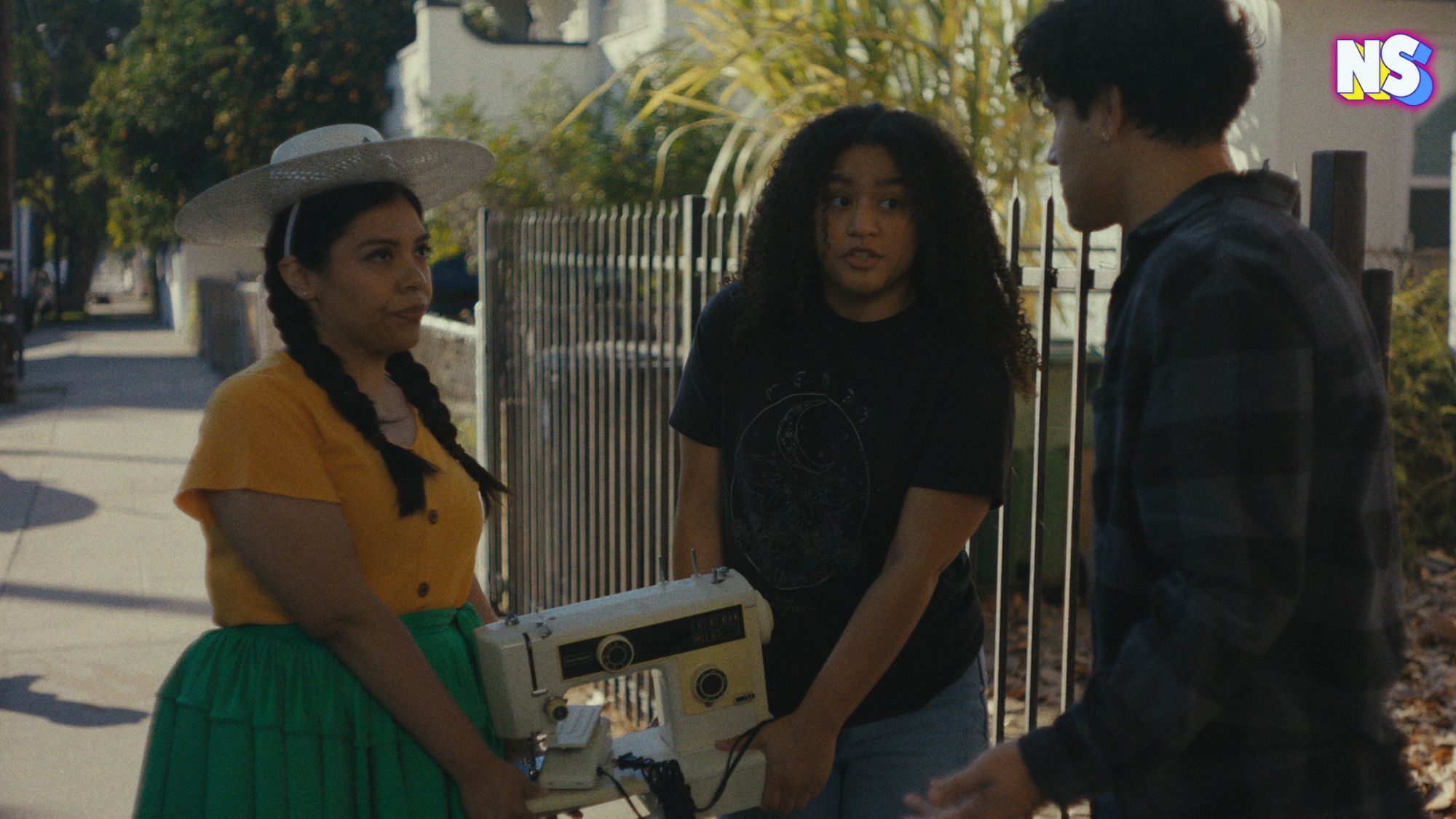Each year, during Dia De Muertos, we see her everywhere. She’s La Catrina, an elegantly dressed skeleton who is known around the world, and makes Halloween ghouls look underdressed and underwhelming by comparison. Why is this skeletal lady donning flowers, a feathered hat, and maybe some French lace though? The answer has deep roots in Aztec history, Mexican society, and dark humor.
@cadenacollective Such a powerful significance behind La Catrina ✨ #cadenacollective #dayofthedead #diadelosmuertos
♬ sonido original – Iván Rosa
How 2 Artists Gave us La Catrina
La Catrina owes her fashionable existence to Mexican artist José Guadalupe Posada, who spent his life illustrating “death” in the form of skeletons to mock the rich of his time. The original sketch, titled “La Calavera Garbancera,” poked fun at Mexicans with indigenous heritage who were, in Posada’s words, “in bones but with a French hat with ostrich feathers.”
Because what better way to critique someone than to draw them as a fancy skeleton? The Calavera Garbancera (later known as La Catrina) symbolized the uncomfortable truth that, in the end, everyone is equal—so maybe skip the fancy hats.
RELATED POST: Why is the Day of the Dead Protected by UNESCO?
Posada’s satirical skeletons criticized everything from politics to economic inequality and were meant to entertain and provoke thought.
But let’s give credit where credit is due: the name La Catrina didn’t appear until 1930, when artist Diego Rivera featured the character in his mural “Sueño de una tarde dominical en la Alameda Central (Dream of a Sunday Afternoon in the Alameda Central).” Rivera added some historical flair to her look, and suddenly, La Catrina was the face of Day of the Dead, a kind of ambassador for the afterlife, decked out in style.
@suhain.p Makeup catrina del libro de la vida ❤️???? a alguien mas le encanta esta peli? #makeupartist #maquillaje #maquillajeartistico #caracterizacion #halloween #makeup #catrina #catrinamakeup #librodelavida #thebookoflife #diademuertos #diademuertosmexico #mexico
♬ sonido original – Suhain Piñita????
Catrina Fever Goes Global
Though Posada never saw his creation become a cultural icon, La Catrina has become the skeleton heard ’round the world. Her likeness now graces everything from sugar skulls to face paint, making her a universal Day of the Dead symbol. Think of her as the “supermodel of skeletons” – you’ll find her on t-shirts, costumes, and tattoos. In Mexico, she’s treated as a symbol of national pride, and abroad, she’s celebrated as the essence of Mexican cultural tradition.
An Aztec Connection?
Some believe that La Catrina’s origins go even further back — to Mictēcacihuātl, the Aztec goddess of death. Ruling over the underworld and the Aztec festival of the dead, she had the same striking look: fleshless, sunken eyes, and, let’s say, a less-than-warm smile.
“Sound familiar?” Podcast Host Francheska Guerrero asks.
Guerrero, and many historians, believe Mictēcacihuātl is the original Catrina.
“… it was in fact Mictecacihuatl, the Aztec underworld queen of Mictlán, who deserves the honor of being Death’s grand lady. Her job was to keep an eye on the bones of the dead, and her presence was prominent during any commemoration of those who had died,” Modern Mexican Mercadito writes.
A Morbid Legacy Lives On
Today, if you want to admire Posada’s original work, you can visit the José Guadalupe Posada Museum in Aguascalientes, Mexico. To see Diego’s mural featuring La Catrina, you’ll have to go to the Diego Rivera Mural Museum, Mexico City, Mexico.
If you’d rather become a Catrina instead, there are thousands of “Catrina Makeup Tutorials” under the hashtags #catrina and #catrinamakeup all over social media. Many of the TikTok tutorials have millions of views, with new ones going up every Dia de Muertos.
So, whether you admire La Catrina, or want to become her during this special time of the year, remember that she’s not just a costume. She’s a reminder that we’re all equal in the end, even if it’s “in bones and a French hat.”
@dorisjocelyn Tutorial de catrina con mis productos favoritos de @L’Oréal Paris ✨ #LorealparisMakeup #bellezaquetrasciende #contenidoconfiable #publicidadverificada #publicidadresponsable
♬ sonido original – DorisJocelyn????





